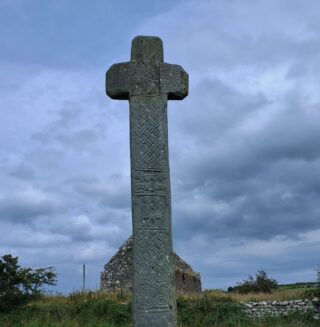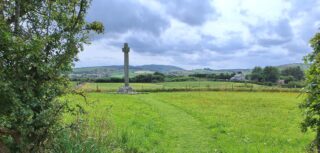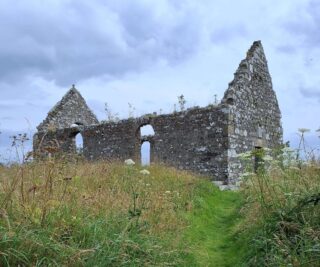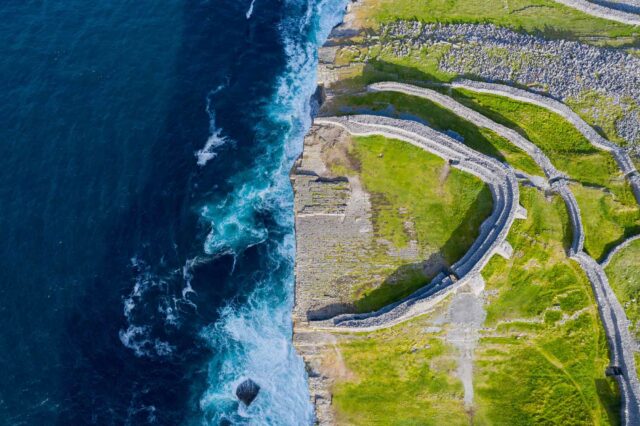Clonca Church and High Cross
A High Cross with stories and designs contained within its panels
Unguided sitesFógra
WARNING: It should be noted that these sites are unguided and a level of care and caution should be maintained during all stages of your visit. The Office Of Public Works (OPW) will not be held responsible for any damages, injuries, or losses that occur
Clonca Church and High Cross
Built on an earlier ecclesiastical site founded by Colum Cill of Donegal, Clonca Church now sits within the confines of a modern graveyard, with Clonca High Cross situated nearby.
The Church, which was part of a monastery founded by St. Buodan, was built within the 17th century, and was in use until 1827. It contains a grave-slab that was erected by Magnus MacOrristin, likely a Scotsman, which has a sword and hurley-stick etched on it. The Church is situated near a roadway by the bog, which likely led to Carrowmore Megalithic Cemetery in Co. Sligo.
There are two High Crosses close to the Church, one that is almost completely intact (it has been restored), and another that is now mostly prostrate, with the head detached. The standing cross is almost 4m in height, with the west facing side consisting of 3 panels: the top and bottom panels both contain an interlace pattern, while the centre panel contains a depiction of two kneeling animals and, below them, two seated figures, which some have suggested could be Saints Paul and Anthony in the desert.
The east facing side of the cross is divided into 4 panels: the two bottom panels contain abstract patterns, the third panel has an interlace design, while the top panel has a scene that likely depicts the story of ‘the loaves and the fishes’.
Visit Historic Environment Viewer for more information on Clonca Church & High Cross
Protect our Past - Click here to read about the importance of protecting our country’s unique heritage sites
This national monument is protected in accordance with the National Monuments Acts 1930 to 2014
Gailearaí
Suíomhanna cóngarach
Caisleán na dTuath
Dúnfort cois uisce a bhfuil stair an-chorraitheach ag baint leis
Timpeall 46.2 km ón
Teach agus Gailearaí Gléibe SAORÁIDÍ – Teach Derek Hill
Fiosraigh bailiúchán ealaíne den chéad scoth
Timpeall 54.8 km ón
Muilte Arbhair agus Lín an Mhuilinn Úir
Déan oidhreacht tionsclaíochta Uladh a chíoradh
Timpeall 55.2 km ón




